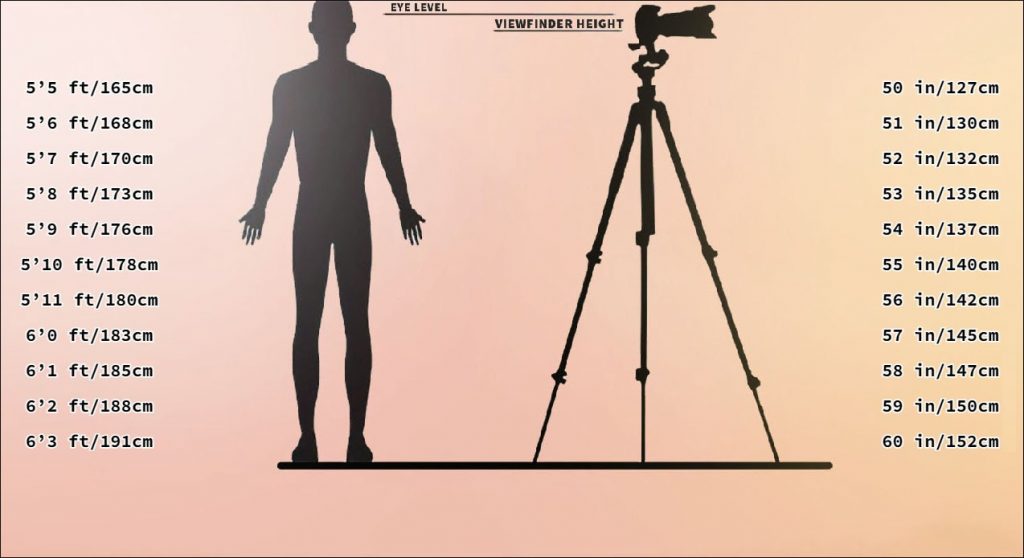
If you are a photographer, I bet that you went through capturing an amazing shot and just to recognize that it got ruined by your shaky hands.
You get mad and you buy a tripod, right?
Just to get disappointed again by the height of the tripod.
In today’s article, I will try to help you find the right tripod for you.
How tall of a tripod do you need?
To answer this in simple words,
A tripod is tall enough when it can hold the camera nice and steady, while you not being forced to bend over or in an uncomfortable position. Having an uncomfortable tripod might result in back pains and such.
Even though visiting a physiotherapist is great, you don’t want to visit him just because you couldn’t buy the right tripod.
There are tons of tripods to choose from, from a pocket one which is quite small and compact to big and heavy ones.
An average tripod, or say a traditional one has the capabilities to extend from 50 inches (126cm) up to 63 inches (160cm).
Finding the Right Tripod For You
When buying a piece of technology, two things decide the outcome.
That’s preference and the budget.
However, a tripod is a tad different, you want to consider its height and its capacity, after all, that’s why we are here.
Before I tell you, how tall should your tripod be, let’s see the difference between an Aluminum tripod and Carbon Fiber one.
The differences between Aluminum and Carbon Fiber Tripods

The construction of a tripod is more important than you think.
The two main build materials of a tripod are aluminum and carbon fiber, both of them do the job they are set out to do while compromising on some fields and exceeding on some.
Aluminum tripods have been out there longer than their counterparts, and their major selling point must be their affordable price.
While Carbon Fiber ones belong to the high-end spectrum, coming at a painful price.
They make up for it by being lightweight, portable while maintaining the stability and the strength of their peers.
On the other hand, an aluminum tripod weights much more; when you think of it, this is more a pro than a con. A heavyweight tripod will result in better stability since winds won’t menage to interfere with its steadiness that much.
I would aim the Aluminum tripods towards a hobbyist and an entry-level photographer.
Carbon fiber ones are pretty much a must for professionals who take things more seriously.
Finding the Right Height
Thanks to modern technology there are tons of offering out there, nowadays even a small tripod can extend up to your height.
But that’s not a thing we will desire most of the time, the higher you extend the tripod, the more it sacrifices stability.
Below, I will show a picture that shows in detail how you should measure tripods height with your body height.

Conclusion:
As I mentioned above it is all about preferences and your budget.
But buying the wrong tripod will result in uncomfortably and frustration.
However, it won’t hurt to bend a little sometime, if you struggle with the height and can’t find the right one, try to go for something that is close to it and won’t burden you much.
In general, keep in mind that you need to look for a tripod that keeps your camera stable while being around your eye level.
This is it, I hope I was helpful.
Enjoy!

Camera Tester & Reviewer
I spend most of my time taking photos & videos of everything in sight. Yes, I am a stock photographer and I’ve probably taken more than 700,000 photos so far.



